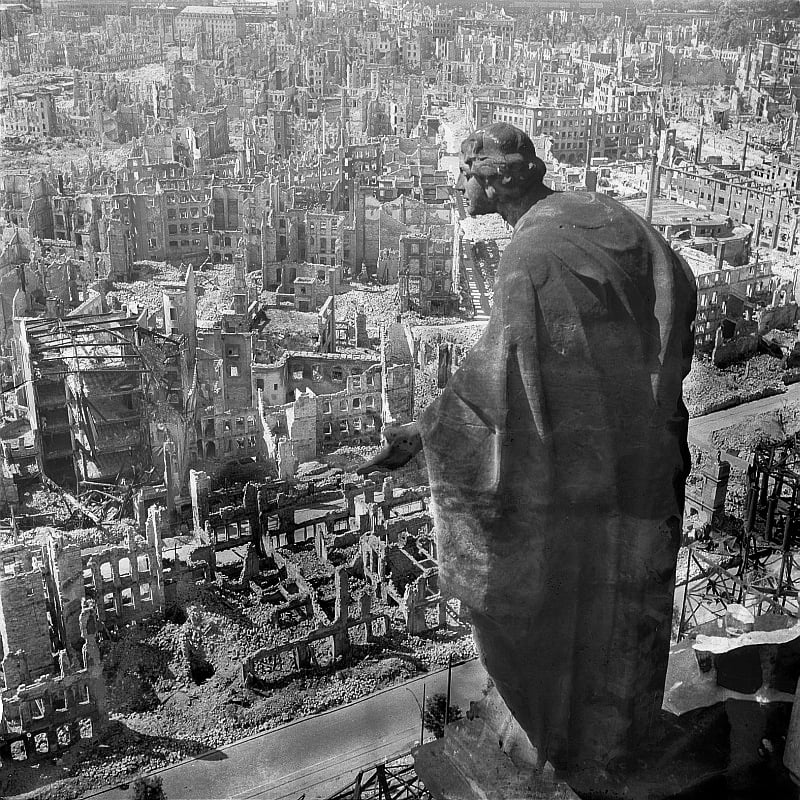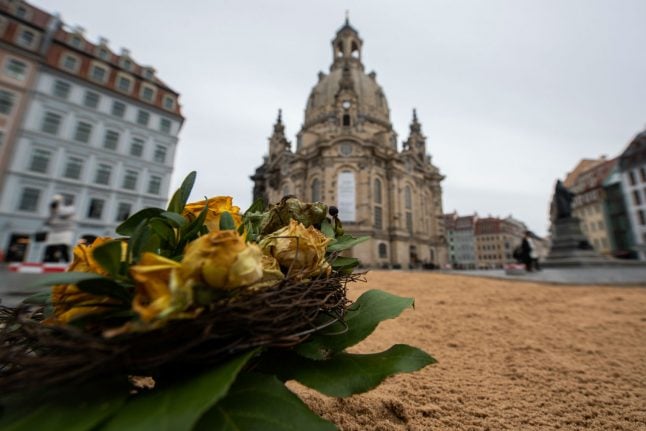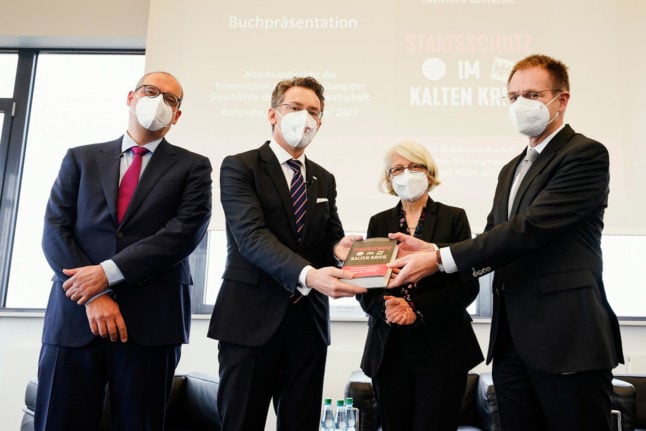American writer Kurt Vonnegut said the city of Dresden resembled “the surface of the moon” after the bombing in his book “Slaughterhouse Five”.
As a prisoner of war, he witnessed the air raids on the city firsthand that fateful February. Dresden was a single flame, he wrote. In the English-speaking world, the term “Like Dresden” can be synonymous for a fire with immense destruction.
READ ALSO: Weekend Wanderlust: Tracing a city's revival in Dresden
The poet Gerhart Hauptmann also found haunting words to describe that night: “Those who have forgotten how to cry will learn it again when Dresden goes down.”

A photo taken by German photojournalist Richard Peter overlooking Dresden from a courthouse tower in 1945. Source: Deutsche Fotothek via Wikimedia
The history
On the evening of February 13th, 1945, the British launched their air strikes on the city, which until then had been largely spared from the war. After two waves of nightly assaults by the Royal Air Force, the Americans continued the attack during the day on February 14th and 15th. Up to 25,000 people died. The firestorm burned down around 25,000 houses and turned the city centre into a ruin.
A few days before the anniversary of the city's destruction, Dresden Mayor Dirk Hilbert, of the FDP, met with tenth graders from a local school to discuss the anniversary with students.
The students initially seemed speechless, but not because the conversation revolved around a massive bombing. They just knew too little about it. A boy said his grandparents never talked about anything from that time. Eyewitnesses to the attacks are gradually dying.
“This terrible event was very long ago. So how can we keep the memory of it alive?” he asked the students – and likely himself.
The topic has become increasingly controversial as right-wing extremists try to reclaim the date for their own purposes. The city is desperate to find the right form of commemoration.
The truth vs. the myth
A struggle for neutral storytelling around Dresden's destruction has been raging for a long time. Contradicting myths revolve around the number of victims, alleged attacks by low-flying aircraft and ultimately hinge on whether the Allies committed a war crime in Dresden.
“There are international lawyers who answer this question with a yes. But you have to attach a disclaimer to this,” says historian Jens Wehner. He said Dresden played a complex part in the context of the war. And if what happened in Dresden was a war crime, many airstrikes, whether perpetrated by the Germans or the Allies in World War II would be considered crimes as well.
Nazi propagators themselves ensured myths about Dresden soon grabbed hold. After bodies were recovered, authorities assumed 18,000 to 25,000 lives were lost – a fact once again confirmed by a commission of historians in 2010. But the Nazi regime wanted to use Dresden’s fall as evidence of an Allied war crime, and added another zero to their figure.
“In March 1945, the Federal Foreign Office instructed German embassies in neutral countries to report casualties of up to 200,000,” the Commission’s report states. The number is still a fact used by the extreme-right today.

Dresden's old city center emerges in the distance on a snowy night in 2019. Photo Credit: DPA
'It's a disaster for us'
“We are a place of pilgrimage for the far-right. It’s a disaster for us,” Mayor Hilbert said. The Nazis had already instrumentalized the air strikes, and the GDR continued to do so. The GDR leadership actually used the date as evidence of “Anglo-American terror,” Dresden historian Johannes Schütz said.
The myth of the “innocent city” has been strengthened in recent years. Experts had always questioned this perceived blamelessness. During the war, Dresden was a stronghold for the Nazis and armament factories, as well as an important transportation hub for the regime.
“Weapons for war were made in Dresden and forced laborers were kept in camps. None of this was hidden or secret. It was visible to everyone,” Hilbert's mayoral predecessor Helma Orosz, of the CDU, said in 2014. The message was clear: Dresden was guilty.
For years, the “Exhibit of Perpetrator Traces” has tried to take back the commemorative date. The tour leads visitors to locations of the Nazi regime in Dresden in an effort to help demystify the city’s history.
This year, Hilbert began his tour at the mansion of NSDAP Gauleiter Martin Mutschmann, which played a major role in the persecution of Jews in Saxony. He also told the students about this part of the story. A student wanted to know why Dresden allowed rallies for the Nazis, and the mayor gentry reminded her of Germany’s freedom of assembly.
He told her the only way to show the far-right they are unwelcome in Dresden is to participate in peaceful remembrance.



 Please whitelist us to continue reading.
Please whitelist us to continue reading.
Member comments